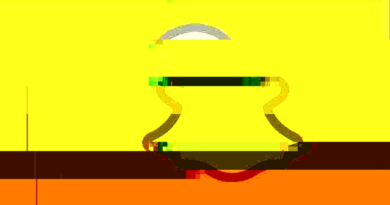Renowned investor Elad Gil on how the great AI race will likely shake out
Elad Gil, a successful founder and prolific investor, has already been called Silicon Valley’s biggest solo venture capitalist given the massive amounts of capital he has been investing in recent years, including on behalf of institutions that reportedly include Harvard’s endowment.
His track record goes a long way in explaining his quiet rise. For example, Gil invested in the Series A round of the highly valued payment software company Stripe 11 years ago and has invested in many of its subsequent rounds. He also snapped up stakes in the note-taking app Notion, the cloud collaboration platform Airtable, the military tech contractor Anduril, and the design tool Figma, which agreed to sell to Adobe for a whopping $20 billion last September — though Adobe is still working to sell Justice Department authorities on the deal’s merits.
In conversation late last week, Gil — who occasionally blogs but maintains a bare-bones site — declined to answer specific questions about how much he’s managing or some of the amounts he has invested in companies. But the quant VC outfit TRAC calls him a “superforecaster” who has funded at least 155 companies, and whose “batting average” is .671, meaning 67% of his early-stage investments have raised at least follow-on rounds, per TRAC data. (It says at least 30 startups in Gil’s portfolio have become “unicorn” companies, though as Gil himself notes, many valuations are poised to change over the next 18 months or so. “The really hard times are coming,” he says.)
When we spoke with Gil, we asked about what founders should do if things go from bad to worse. We also talked about his ongoing fascination with AI and some of the early checks he wrote to startups that are now raising serious venture dollars, including Character. AI, backed this year by Andreessen Horowitz, Perplexity.AI, backed by NEA, and Harvey, backed by Sequoia Capital.
Not last, Gil shared how he’s using AI to scale up his own work. You can listen to our full interview; in the meantime, excerpts of that chat follow, edited for length.
TC: Years ago, you wrote a book titled the High Growth Handbook, about how to scale startups from 10 to 10,000 people. Do you now think there was too much focus on growing so quickly?
EG: The focus of my book was around if you hit that magical moment of product market fit, what you do next. . . I think this mantra of growth for growth’s sake really came in mainly during the COVID period. As capital became really cheap and available, people started scaling when they didn’t quite have actual product market fit. They started scaling before they had a lot of customers, or before it was clear that they had a moat that would create some sort of defensibility for their business. I think where things went off the rails was people started raising money many years ahead of where they were. And then they started hiring against that money that they raised instead of hiring against the business that they had.
We’re hearing lots of stories from employees eager to talk about mismanagement inside their companies as things go south. Any advice you can offer to companies about how to scale back without completely blowing up in the process?
A lot of the assessment that people are doing actively right now to ask: where do I think this is going to be in one or three or five years? And if it’s not working, what should I do? Those are really tough choices to face. People have to make decisions between whether they shrink the team and maybe change direction or do they try to sell the company because it’s clearly not going to work. Do they shut down and return money? If you look at when people raised a lot of the money in the last couple of years, it largely happened in 2021. And if people raise three to four years of money and fundraise when [they] have nine months left, that means a lot of people are going to have to start fundraising at the end of this year. So I feel like the really hard times are coming. I think this is still kind of a little bit of a warm up, or anticipatory period.
There’s just this massive backlog of companies that are about to go under that should have shut down years ago, but just kind of kept persisting.
In terms of your own investments, can you speak to how much you’ve raised in recent years, and how many companies are now in your portfolio? You were raising $620 million per an SEC filing in 2021 . . .
I haven’t really talked too much about it [and] I actually don’t know the exact number [of portfolio companies] right now. Traditionally, I would just invest my own money. Then things started to get bigger in terms of the allocations I could invest behind, so in some cases, I did what are known as SPVs, or single purpose vehicles or investments.
Right now, my model is a bit of a hybrid, where anything that’s kind of small, or if people just want me in as an angel, I can do it personally. If something gets bigger, I can use a fund. If something gets really big, I can use a mix of personal money, fund money, and SPVs. I’ve tried to keep a flexible approach so that as I work with different companies at different stages, I can tailor what I do to what they actually want and need. I want to avoid the situation where I have a massive fund and feel the need to go and invest a bunch of money and push it on people and kind of start acting badly.
You were paying attention to generative AI before some others. Have you been taken at all aback by what has been released into the world [on the generative AI front] over the last six to 12 months?
For me, the big moment in some sense was seeing things like some really early generative art based on GANs [which is a class of AI and machine learning algorithms]; it was just striking what non-artists could do. Then a little bit after that, when GPT-2 and then GPT-3 came out, that was clearly a moment where there’s such a big step up between them that it was clearly a sea change.
Are you an investor in OpenAI?
I’m not involved with most of the things that are happening at the foundation level, but I don’t want to talk about any specific companies or anything.
You sat on a panel in L.A. earlier this month with Ashton Kutcher, whose Sound Ventures just raised a growth fund to expressly back just six or so foundational model companies — three of which it has already invested in: OpenAI, Anthropic, and Stability.AI. What do you make of that strategy?
There are a handful of companies that are really far ahead in terms of developing these foundation models. And I do think that there’s going to be some scale and capital effects to them, at least for the very most cutting-edge models. So for example, you know, GPT-4 still feels to be quite a bit ahead of everybody else, and obviously, Google has the capabilities to build something against. Anthropic has been iterating on its cloud model. There are a few other players. There’s Cohere and A121 [Labs] and the like. But at least for now, it seems like proprietary models are a generation or two ahead of open source, and if you assume that each model is going to get quite a bit more expensive than the prior generation of model, then you can assume that this trend may exist for at least a couple more years.
That means two things. One is that when there’s GPT-7 or whatever, maybe open source is the equivalent of GPT-6 or GPT-5.5. And GPT-6 is probably going to be incredibly performative. It’s probably going to do all sorts of amazing things. So that leads to the question of what are the really cutting-edge things that you’ll need the most advanced models for, and that’s where I think there’ll be a big chunk of value in the industry — but I think a lot of it will also just go to the things that are a generation or two behind. And that’s where I think open source will also play a role.
So I kind of view it as a world where we’ll have a handful of very large, closed, proprietary models and an oligopoly market that’s sort of like the cloud world where we have Azure, AWS and Google Cloud as the three big players. I think the models may naturally converge there as well. But then we’ll have a bunch of open source that people will use for all sorts of things in parallel.
Again, for much more with Gil, including why he thinks more founders should consider shutting down and returning capital while they still can, you can listen to our longer conversation here.




